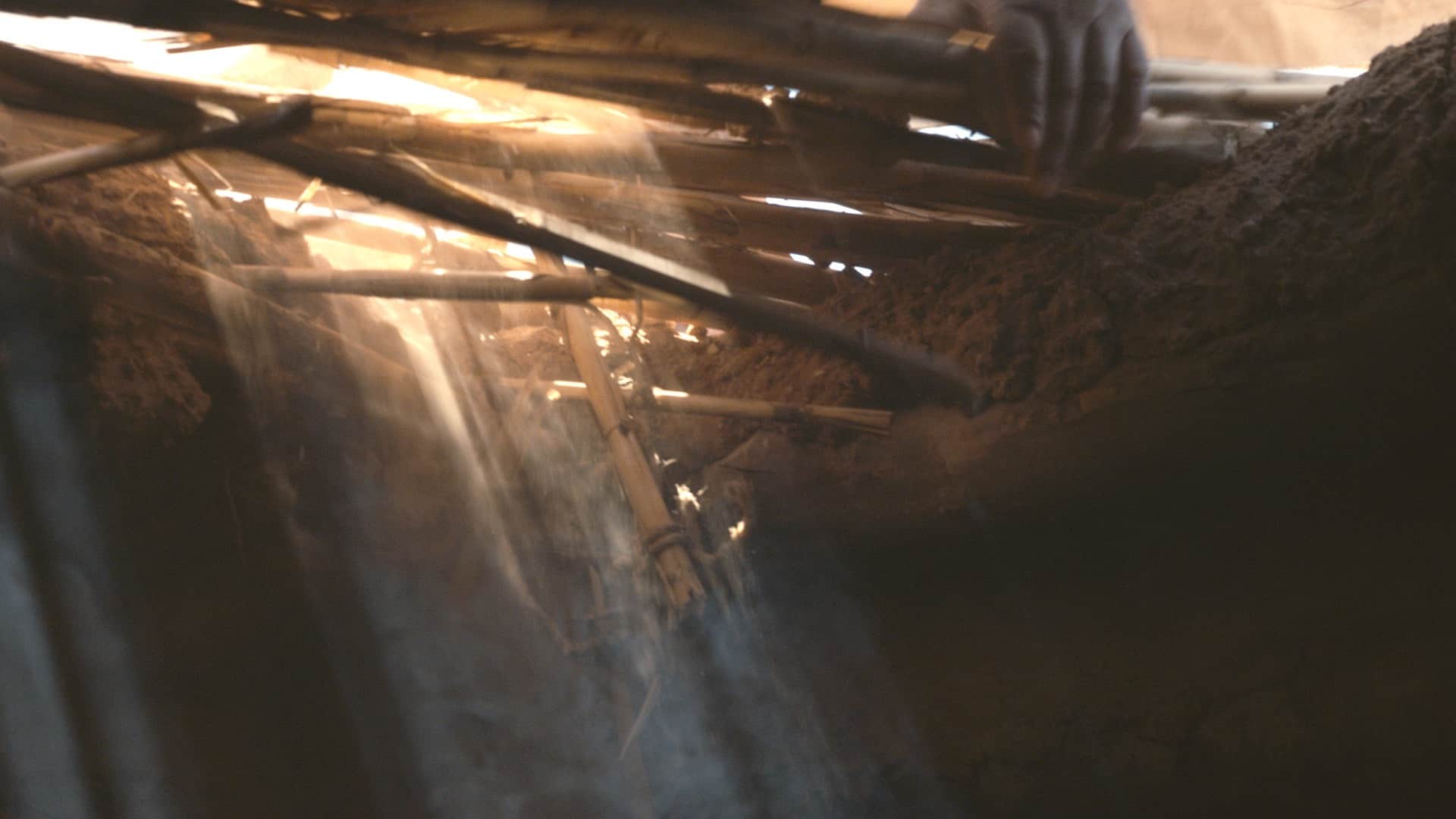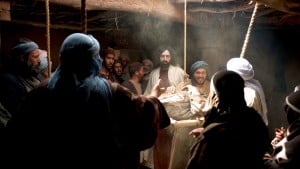Jesus was teaching “at home” (see Mark 2:1) in a crowded room. Then four men came, carrying a paralyzed man. Since the four “were not able to bring him to Jesus because of the crowd, they removed the roof above where He was” (v. 4). What was the roof of this house like?
This miracle is reported in Matthew 9:1-8, Mark 2:1-12, and Luke 5:17-26. Matthew’s account does not mention the roof at all. We’ve noted already from Mark 2:4 that the four men “removed the roof” directly above Jesus. That verse goes on to say that after “they had broken through, they lowered the mat on which the paralytic was lying.” This is consistent with what we know about roofs in first century Palestine; they were flat, supported by beams that were covered with sticks and branches, then overlaid with mud and clay mixed with straw. “Broken through” seems a very apt description of making a hole in such a roof. This wouldn’t be a difficult task for four men.
Luke’s account puts an interesting twist on the story. Luke 5:19 tells us that, lacking a way to approach Jesus because of the crowd, “they went up on the roof and lowered him on the mat through the roof tiles into the middle of the crowd before Jesus.”
Why did Luke mention tiles, since tiled roofs were not characteristic of houses in this area during this period? Some have suggested Luke, writing for a Gentile audience, gave his account in terms that his readers would best understand. In this case, the “tiles” would be a reference to the debris created when the men broke through. Would this constitute an error in the Scripture? No. The Bible does not always speak with technical precision with regard to all it says, although does speak truly and accurately. Here’s another example. In Matthew 13:31-32, Jesus said, “The kingdom of heaven is like a mustard seed that a man took and sowed in his field. It’s the smallest of all the seeds, but when grown, it’s taller than the vegetables and becomes a tree, so that the birds of the sky come and nest in its branches.” Technically and scientifically speaking, the mustard seed isn’t the smallest of seeds. Nor does the mustard plant become a literal tree, even though it does grow large enough for birds to inhabit. We must understand that Jesus was not making a statement about botany here, but about God’s kingdom. Still, what He said about the mustard seed and the mustard plant is certainly true in a general sense. The same standard can apply to Luke’s use of the term tiles without compromising a high view of Scripture.
Certain other scholars contend that the term tiles here simply means “roof.” A third suggestion is that this home actually may have had a tiled roof, since archaeological discoveries have shown that tiled roofs predated the New Testament era. It’s possible that the influence of Gentile culture and architecture brought some tiled roofs to this region of Palestine.
Copyright © 2016 B. Nathaniel Sullivan. All rights reserved.
photo credits: www.lumoproject.com
Unless otherwise noted, all Scripture quotations in this article are taken from the Holman Christian Standard Bible®, Copyright © 1999, 2000, 2002, 2003, 2009 by Holman Bible Publishers. Used by permission. Holman Christian Standard Bible®, Holman CSB®, and HCSB® are federally registered trademarks of Holman Bible Publishers.

